This Week in Neo4j – AuraDB Free, Spark Connector Updates, KNIME Integration, and More…
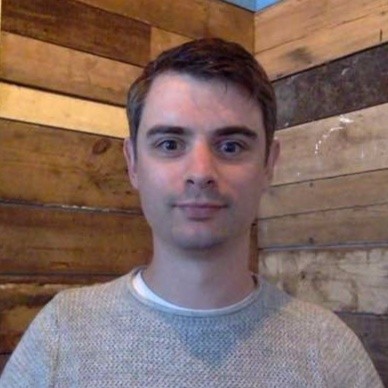
Developer Experience Engineer at Neo4j
6 min read

Hey everyone!
I’m Adam and I work on the education side of the Dev Rel team at Neo4j, mainly focusing on GraphAcademy.
I don’t know about you, but I always find that the week the clocks fall back in Europe plays havoc with my schedule, especially with the regular meetings arranged by my colleagues over in the U.S.
For the next month, I will be trawling through the archives to bring you some of the more interesting articles written by our fantastic community members.
We start off with some big announcements from Neo4j related to Neo4j Aura and the Neo4j Connector for Apache Spark.
Tomaz Bratanic also gives us an overview of the new Twitch dataset recently added to Neo4j Sandbox.
We also have posts from Josip Almasi on his Open Source VR Server built with Neo4j, an introduction to the Neo4j Integration for KNIME, and finally Rik Van Bruggen and Stefan Wendin on presenting the value of Graphs.
I hope you enjoy reading these articles as much as I have.
/Adam Cowley
Featured Community Member: Dr. Kim Martin, PhD
This week’s featured community member is Dr. Kim Martin.
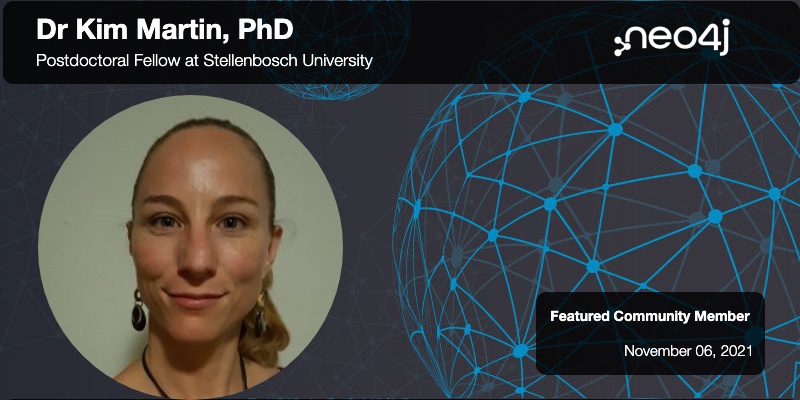
Dr Kim Martin – This Week’s Featured Community Member
Kim is a newcomer to the Neo4j community and in 2020 joined the Department of Forest and Wood Science at Stellenbosch University as a Postdoctoral Fellow.
Kim did her B.Sc. (Biochemistry; Genetics & Development) and B.Sc.(Med)Hons (Cell Biology) at UCT, Cape Town, and (following a number of years working in research labs) her Ph.D. in Biomedical Science at the University of Edinburgh, Scotland. She is currently a Postdoctoral Fellow in the EucXylo group in the Department of Forestry and Wood Science in Stellenbosch University in South Africa. With a background in mammalian tissue morphogenesis, she has enjoyed the switch to studying xylogenesis (xylem tissue morphogenesis) in trees.
Kim is focusing on approaches to managing data and setting up modelling frameworks in the group, and – since attending NODES 2021 in June – has been exploring how to represent concepts relevant to her group as a Knowledge Graph using Neo4j.
Kim was the first person to provide us with feedback on our brand new GraphAcademy site and we are extremely grateful.
The New GraphAcademy

As this is my first week penning the Twin4j blog, I thought I would take this opportunity to shamelessly plug the work that we have been doing on GraphAcademy.
You may have already read my blog post introducing the new GraphAcademy site, but if not I would like to spend a couple of paragraphs on our new set of courses.
We have tried to focus on your journey as a Neo4j professional and provide you with a clear path to a Neo4j Certification.
-
The Neo4j Fundamentals course is designed to give anyone a high-level understanding of what graphs are and where Neo4j fits in your tech stack.
-
Once you know what graphs are useful for, you can progress to the Cypher Fundamentals course to learn how to get data out of the graph. The course is hands-on, constantly challenging you as you go.
-
The Graph Data Modeling Fundamentals course will then provide you with the techniques required to create and refactor your data model for performance.
The Cypher Fundamentals and Graph Data Modeling Fundamentals courses both give you some hands-on experience using Neo4j Sandbox instances.
Among the courses that are currently in production are Importing Data into Neo4j and Building Neo4j Applications with Node.js.
Many of the courses on the site are listed as Coming Soon.
If you see anything you like, you can register by filling out the form on the course overview page.
We will use this information to prioritise our courses as we go.
If you have any feedback, please feel free to reach out by emailing graphacademy@neo4j.com.
Or alternatively, you can use the feedback forms embedded in every lesson.
Announcing Neo4j AuraDB Free
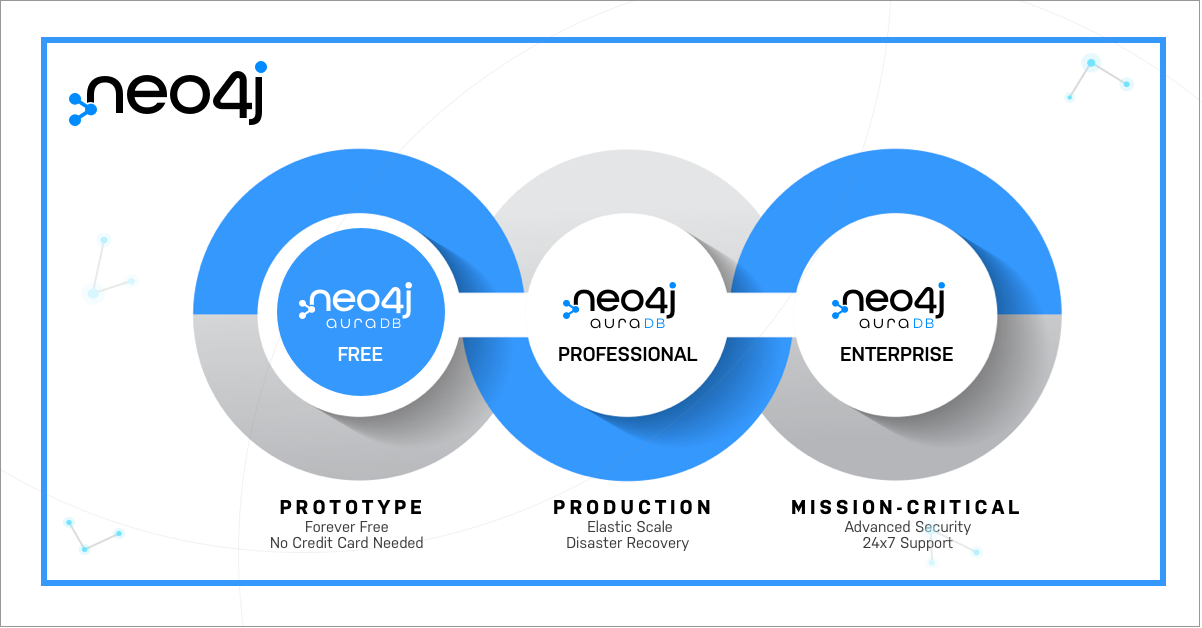
We’re excited to announce that Neo4j AuraDB Free is now publicly available.
The introduction of AuraDB Free means that you can now sign up and launch a fully-managed Neo4j database free of charge.
Whether you’re trying out Neo4j for the first time, working on a prototype application, or even looking for a testing environment, this option is for you.
You can either start with an empty database – into which you can load your own data – or explore the movies dataset.
AuraDB Free databases are free forever, but have a limited graph size of 50k nodes and 175k relationships.
You can get started now without entering credit card details.
Apache Spark for Neo4j AuraDB
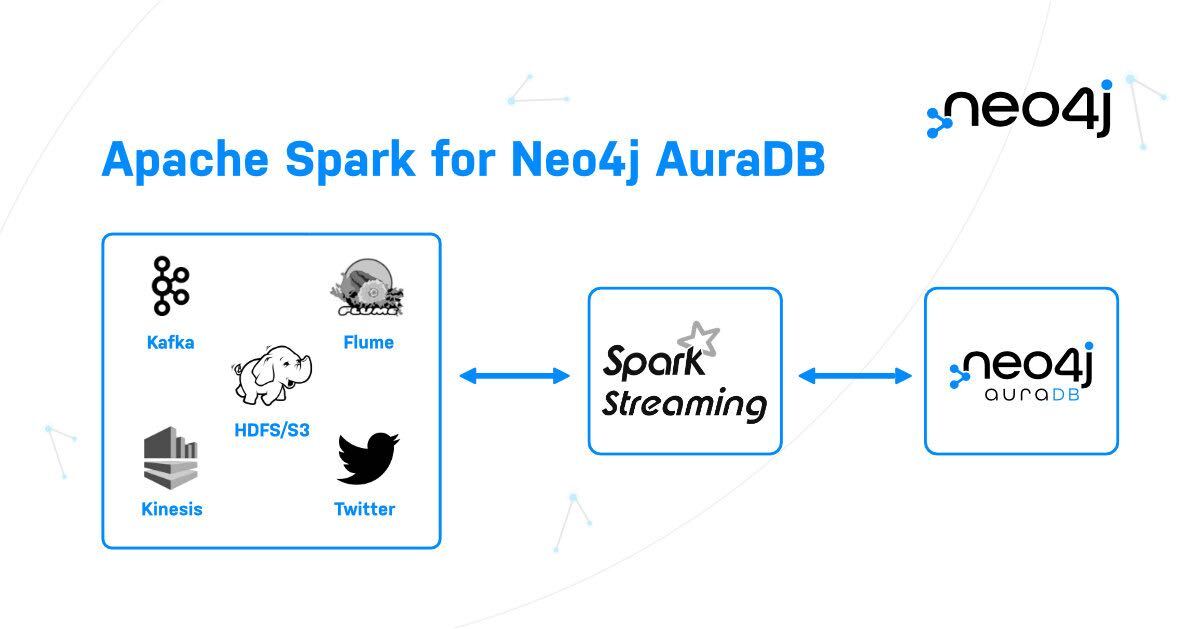
The new 4.1 release to the Neo4j Connector for Apache Spark provides new functionality that allows you to produce or consume data to and from Neo4j AuraDB.
Bi-directional streaming with Spark will allow users to perform advanced ETL processes, enrich their data sets, and even implement Machine Learning workflows with Spark.
The Neo4j Connector for Apache Spark takes advantage of the Spark streaming API and treats Neo4j as any other streaming source.
If you are a Neo4j Aura customer, this release is great news. We’ve made bi-directional integration with Spark streaming possible. You can get started today, whether you’re using Aura Free, Professional, or Enterprise. If you are running Neo4j Enterprise Edition, you can do exactly the same.
Analyzing Twitch Streamers and Their Audiences
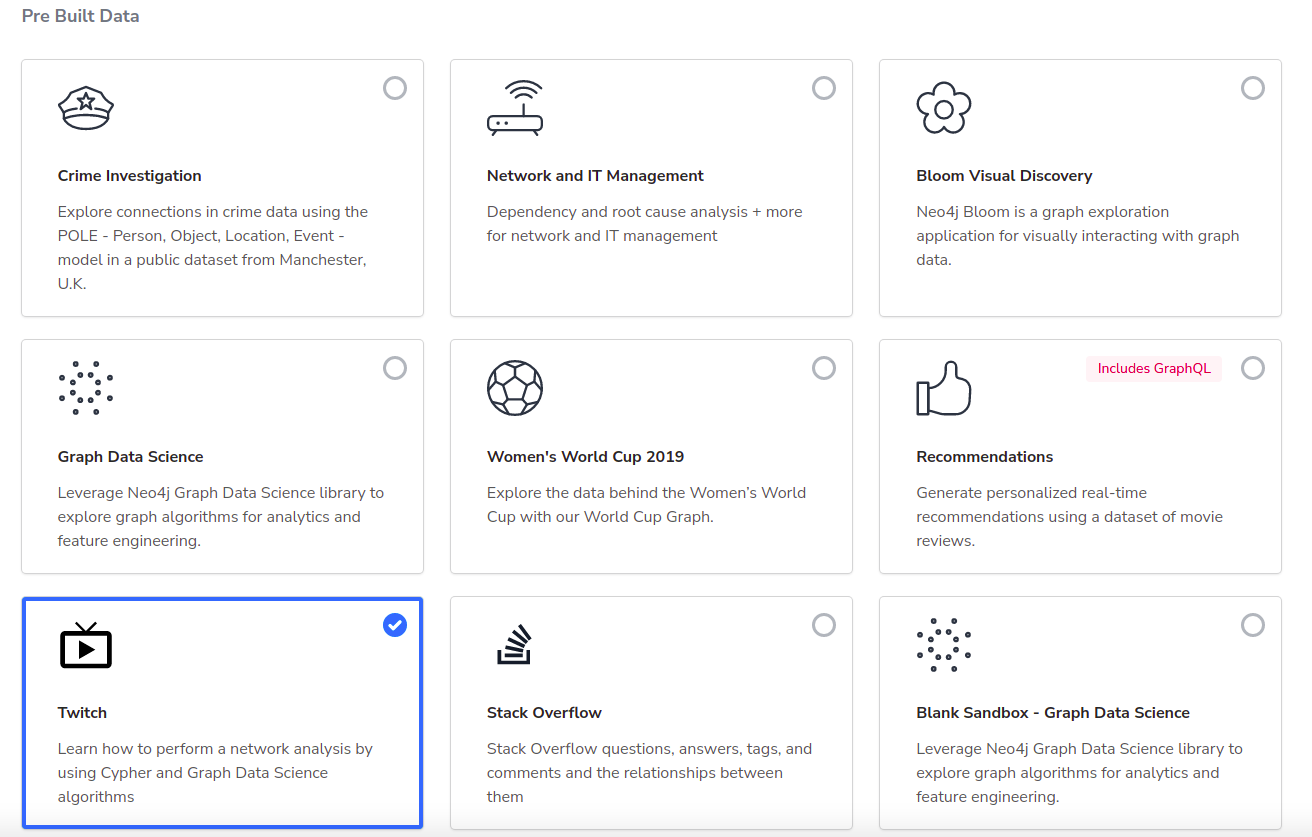
Avid fans of Neo4j Sandbox may have noticed the addition of a new Twitch dataset.
This dataset provides a great opportunity to explore the basics of network analysis without having to download and install Neo4j.
After firing up a new Sandbox instance with the Twitch use case, you will be able to explore the dataset while being introduced to a number of network algorithms from the Graph Data Science library.
The guide will teach you to evaluate overall network statistics, use the PageRank algorithm to determine the most influential streamers, and use Node Similarity algorithms to identify streamers with high crossover in their audiences.
For a more in-depth look of the dataset, you can read Tomaz’s blog post.
Open Source VR Server

This week on the Neo4j Community Site, Josip Almasi posted a link to his Open Source VR Server, which has been built on top of Neo4j.
His blog post from December 2020, titled Why I Rewrote My Open Source Virtual Reality Server, explores how he built an open, interoperable VR server to open standards including WebXR and WebRTC.
Neo4j Integration in KNIME

Artem Ryasik published an article on the Neo4j extension for KNIME Analytics Platform that enables you to analyze Neo4j data in KNIME.
The article explores a dataset featuring cocktails, bars, and bartenders.
So if you like a tipple, this article could be for you!
KNIME is a free, open-source, data analytics platform that has been designed to provide end-to-end solutions.
Graphalue Part 4: Presenting the Case for Graph Value

And finally, Rik and Stefan, our friends in Sales and Innovation, have been at it again, publishing Part 4 in their Graphalue series, this week presenting some valuable tips on how to present the value case for graphs within your company.
I have spent a lot of time with these two over the years and I have always found our conversations extremely valuable.
I don’t know about you, but I’m a huge admirer of Stefan’s ability to effortlessly switch between the insightful and the sublime.
Tweet of the Week
There have been so many great Tweets this week! Neo4j certainly went all out for Halloween and it’s great to see in-person conferences are happening again.
But as a Node.js developer with a keen interest in visualization, I’ve got to pick Tomaz Bratanic‘s Tweet, visualizing thousands of flight routes between airports using sigma.js.
@sigmajs with GRAND stack to visualize airport routes. I used to be scared of network viz with thousands, but here I have 40k rels and use GPD coordinates for layout, and works just nicely!!! #Grandstack #neo4j #sigmaJS #flights pic.twitter.com/G7TrioR2pk
— Tomaz Bratanic (@tb_tomaz) November 3, 2021
Don’t forget to RT if you liked it too!








